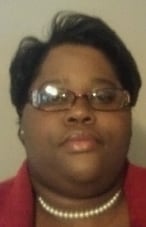
The Complexity of High Quality Care
When asked “What do children need for optimal growth and development?” most of us will reply “high quality care.” While this answer is correct, it is definitely not simple. With these three words, we refer to a complex system involving multiple partners, skills, knowledge, and challenges. Predictable routines, hands-on learning experiences, language-rich environments, positive interactions with caregivers, and parent engagement are just a few components of high quality care. In addition, all of these components are built on the foundation of a healthy, knowledgeable, well-trained and compensated work force.
At the core of this complex system is the children’s program administrator, who acts as the glue to hold together the varying components. Business manager, pedagogical leader, human resource administrator, and navigator of state and federal standards are a few of the roles this individual must fill on a daily basis.
Empowering Administrators
Armed with this knowledge, one must come to the conclusion that in order to truly move the needle of high quality, we must first empower, support, and nurture the children’s program administrator. Whether the title is director, coordinator, administrator, principal, or primary caregiver, one thing is certain: we cannot continue to neglect their needs and expect a change in the programs in which they serve.
How do we meet the professional development needs of such a diverse population of leaders? Perhaps the answers aren’t in the services themselves, but rather, in the approach used to develop and provide those services. What would happen if we met administrators at their individual levels of professional growth and then provided scaffolding and support as they move towards skill maturity and mastery? One of the strategies used in Arkansas is to provide a vast range of sequenced services and support for administrators. At each stage of their professional growth, the goal is to provide secure environments in which administrators can assess their programs and then take the next steps in program improvement with resources already available to them.
Services and Supports for Administrators: Examples
Here’s a list of some of our services and supports:
- Comprehensive menu of trainings for all levels of professional development, addressing all competency areas
- Regional resource and referral agencies that provide resources for administrators
- Directors’ networks available to administrators who are working toward and/or have completed the state administrator credential
- Facilitated peer learning communities to support administrators in consistently meeting minimum licensing and QRIS requirements
- Moderate to intensive individual coaching to help administrators consistently meet licensing standards and/or reach the beginning levels in the state’s QRIS
- Technical assistance available at no cost to all administrators for a wide range of topics
- Calls from a coaching specialist to the administrator of every new QRIS level 1 program to offer congratulations and help them assess their needs for continued support
This isn’t to say we have all the answers! While we are actively working to offer services responsive to the needs of program administrators, there is still more work to be done. We have just decided that not having the answers doesn’t release us from our responsibility to seek them.
What do children need for optimal growth and development? Access to high quality programs with knowledgeable, competent, and confident program administrators. What will we do to help them get it?

Nichole Parks is a Program Coordinator with A-State Childhood Services. Her philosophy is that by nurturing the growth and development of program leaders, we create pathways to sustainable quality programs deserving of our children.
Nichole holds a Bachelor’s of Early Childhood Education from Arkansas Tech University, as well as several state specialist certifications. During her 21 years in early childhood education she’s taught preschool, served as the Infant and Toddler Director of a NAEYC and state accredited program, and mentored directors leading their programs through quality accreditation. She and her husband, Wilbert reside in Arkansas and are the proud parents of 3 children and one granddaughter.

